Mice remain one of the most dangerous and annoying rodent pests in a private house or in an apartment. Elimination is not a simple task, but it is bearable if you know what to do and how to do it. Most of the scientists agree that sanitation, exclusion and killing (trapping and poisoning) are the most effective ways to get rid of mice. Here you’ll learn how to kill mice using poison baits and traps. Are you ready for the mouse hunt? Let’s begin!
What You’ll Learn from this Guide:
- Best Ways to Get Rid of Mice Fast
- The Comparative Table of 10 Mouse Control Methods: Advantages/Disadvantages/Effectiveness
Best Mouse Killers
Effectiveness Scale: 1 being the least, 10 being the most effective.
 |
 |
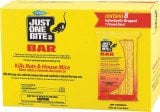 |
|
Pest Venator Repeller (4-pack) |
Victor Electronic Trap |
Farnam Poison Bait (8-pack) |
|
Safe way: drives mice out of the house by means of ultrasound. |
For fast mouse killing without mess and blood. |
The fastest, reliable, and cost-effective but a dangerous method – pets may eat the poison. |
|
Effectiveness: 9 |
Effectiveness: 10 |
Effectiveness: 10 |
More mouse killers you’ll find below in 10 Mouse Control Methods
Best Ways to Get Rid of Mice: Exclusion & Killing
Many methods of eliminating the mice resemble those of getting rid of rats, but the devil is in the details, so you have to figure out these details well. Everything turns out to be not as simple as it seemed!
Most of the scientists agree that sanitation, exclusion, trapping and poisoning are the most effective methods for controlling rodents. Each method has its own advantages and disadvantages. But none of them are 100% effective.
You will have to combine several methods at once. First, clean up the mess. Hide any food. Seal all cracks to deprive the unwanted guests of food, shelter and access to your place. You can attempt to kick out a settled family if there is one, but they will hardly leave your house willingly. If they don’t, bring into play some traps and poisons.
The Comparative Table of 10 Mouse Control Methods
Effectiveness Scale: 1 being the least, 10 being the most effective.
| Method | Advantages | Disadvantages | Effectiveness |
| Sanitation | Once you clean up the mess and debris left in the attic, barn or backyard, you will remove any potential places for building a new mouse nest. | Won’t eliminate the existing population. | 4 |
| Sealing All Entry Points | Won’t let the mice enter your house. Sealing must be conducted before mouse season opens. | Won’t eliminate the existing population. | 8 |
| Snap And Glue Traps | Cheap. | Mice won’t die instantly. You will be able to hear squeaking and watch them try to escape. About a dozen unites are required. | 4 |
| Electronic Traps | Immediate killing. No mess, no blood. Safe for humans and pets. | Is not a cheap method, the prices start at $20. | 10 |
| Poison Baits | Is not very effective on large lots (warehouses and farms) for mass killing, but is quick. | Can be dangerous for small children and pets. | 9 |
| Natural Repellents | Safe and natural. | Mice adapt quickly and are no longer driven away. | 2 |
| Electronic Repellers | Safe for pets and humans. | Although mice are easily frightened by unfamiliar noises, they become accustomed to regularly repeated sounds. | 5 |
| Mothballs | Widely available. | Harmful chemicals are extremely dangerous for humans and pets. | 1 |
| Cats | 100% organic. No dead bodies, cats consume them. | Not reliable, a cat might neglect catching mice. | 3 |
| Exterminators | You needn’t worry about buying or doing anything. | A very expensive method. Exterminators will set the traps and pour poison but it is you who will have to clean up the dead bodies. | 9 |
STEP #1. Start with sealing cracks and other entry points
Mice are known to fit into a crack which is only ¼ inches wide! Since mice are small, hiding is easier for them. Moreover, they are very quick; their velocity can reach up to 8 miles per hour! That’s why they’re hard to catch in the house or in an apartment.
They are excellent climbers and can run up any rough vertical surface. They will run horizontally along wire cables or ropes and can jump up 12 inches from the floor onto a flat surface. And can squeeze through openings slightly larger than a pencil. Seal all holes and openings for water pipes and vents.
STEP #2. How to catch a mouse
It seems like hundreds of various traps are sold nowadays. Each manufacturer has a “unique” product to offer. Behind the seeming abundance of devices, you can reveal only five types of traps.
Types of mouse traps
- Classical snap traps (Check the current price) are the best-known ones; they are cheap, simple and cause enough pain to their victims.
- Glue boards (Check the current price) are similar in some way as they hold the pests tight until the mice die of dehydration. When running along a familiar trail, a mouse would suddenly contact a sticky surface from which it cannot escape. If a board gets accidentally stuck to a human or a pet, it can be removed with some vegetable oil.
- The most state-of-the-art killing method involves using electronic devices (Check the current price). They are able to kill mice within just a few seconds, which makes them more humane, clean and effective than other types.
- For those who find killing unacceptable, special live-catch traps (Check the current price) exist allowing you to catch live animals and set them free.
- Enclosed snap traps (Check the current price) were invented for the most sensitive individuals who do not wish to come in contact with the rodents. Their interior is typical and on the outside they resemble small houses or boxes. Such design prevents you from looking at a dead rodent or touching it: just empty it into a trash before re-using.
Where should I place the mouse trap?
Set them along the walls where you have seen mice or their life activity traces ( feces, nibbling or trails). Locate a trap perpendicularly to the wall (though some manuals recommend parallel placement).
Rats and mice have different behavior around new objects. Rats are cautious, and it may be a week before they approach a trap. Mice are curious and will normally approach traps the first night.
If you don’t catch a mouse in the first few nights, it is in the wrong location. According to8 the Kentucky University, mice are very inquisitive and will investigate each new object placed in their foraging territory. But remember that they hate leaving their nest, so find out where it is and place the traps right there.
Place traps close to walls. Adults won’t get far away from their nest in search of food, so it will be easier for you to find a mouse nest. This is confirmed2 by the Department of Public Health (Los-Angeles): “Each night, rats can travel from 100 to 300 feet from the nest in search of food. House mice can search for food and nesting materials in an area as small as 10 feet from the nest”.
To help mice overcome trap shyness, place it “unset”, for several days. Rodents may be mistrustful of a new device. That is why you should keep it turned off for a few days with the bait inside.
Wear gloves. According to3 the Missouri University, mice have keen senses of taste, hearing, smell and touch. So don’t forget to wear gloves when setting traps.
What is the best bait for mouse traps?
Don’t forget that it is highly unlikely that any mouse will enter a trap willingly. You’ll always need some food bait for it. Use your rodents’ taste preferences as a guide: they can range from dog food to gum and bacon. Through trial and error in the choice of bait you’re sure to destroy those creatures!
How often should I check a mouse trap?
You have to check traps twice a day. Then you should clean it as no rodent will enter trap if it smells like a corpse.
STEP #3. Electrocute Them
Nowadays, both old school methods of catching the mice, such as snap traps and modern electronic rat traps are quite popular. The latter show better results, so more people prefer them. Electronic devices are considered more humane than good old wooden ones.
The main disadvantage of snap type is that many users complain of having to kill the poor animals trapped there. We think you’ll agree that this is not quite a pleasant thing to do.
When using electronic mouse killer, you won’t encounter such an issue. When a rodent gets inside, it touches an electrified metal plate and gets electrocuted. Electronic devices kill mice faster with high voltage. No blood. No squeaking. No mess.
As a rule, these device have an indicator which tell you whether it is empty or someone is in there.
There are fewer electronic mouse traps than rat ones. However, the former are as a rule more accessible and compact and can be thus placed anywhere. Victor Mouse Zapper M2524 for Check the current price is the best-known one. It can kill a rodent within five seconds which is why many consider it the most humane mice killer. There will be no mess, no blood and no cord is needed as the Victor is powered by four AA batteries. Check its contents regularly as no mouse will enter it if it smells another dead rodent.
Experienced users share a life hack: fill the device with some bait and leave it turned off for a few days in order to lull the rodents’ vigilance. Turn it on after that so as to attract the mice with delicious smells to their last meal.
Mouse Trap Type Comparative Chart
| Type | Advantages | Disadvantages |
| Snap | Very cheap. | Doesn’t kill. |
| Live Catch | Humane and cheap. | You must take it away and release the mouse. |
| Glue | Cheap. | A mouse will squeak and die painfully for several days. |
| Electronic | Fast death from high voltage, no blood and mess, catches dozens of rodents per battery change. | Expensive, do not use outdoors without any waterproof accessories. |
When Trapping Is Better Than Poisoning
Rodenticides are of course simpler, faster and better than traps. You don’t have to regularly check them; you merely wait for the results after having spread the poison. This makes them especially convenient for use on large properties. They contain brodifacoum, chlorophacinone, diphacinone or warfarin. These substances prevent blood clotting making the victim die of internal bleeding. Several poisons lethally affect the rodents’ CNS, kidneys, heart and liver, hence the rodenticides’ biggest drawback in being hazardous for kids and pets. Moreover, the pests will die anywhere and exude an unpleasant putrid smell unless you remove them in time.
Traps are deprived of these disadvantages. If several mice have infested your house, don’t rush to poison them. When there are a few small rodents, try catching them.

STEP #4. Use Poison Baits
Poisoning is one of the most effective ways to control pests. The idea of rodent poison baits is pretty much the same: they cause bleeding in the rodent’s body or liver, they make kidneys and other organs dysfunction causing the rodent to die. It will be best if the rodents had unlimited access to the poison, as not all of them will be killed after the first serving. Usually the baits have cumulative effect and kill the rodents within a few days.
Remember that rodents don’t die far from their habitat! That’s why if you are fighting them indoors; inspect the rooms daily in search of dead bodies and dispose of them as soon as possible. When decomposing, the bodies exude the terrible dead rodent smell. When necessary, this problem can be solved though, so make sure you study our guide in order to be ready to handle such unpleasant consequences.
First and second generation baits are well-known among all poison baits.
- First generation poisons don’t kill instantly and take some time to accumulate in a rodent’s body.
- Second generation poisons require a single intake.
Anticoagulants (bromadiolone, chlorophacinone, difethialone, brodifacoum, warfarin) often serve as active ingredients of poisons. They disrupt normal blood flow and cause lethal internal bleeding.
Another bait type contains non-anticoagulants (zinc phosphide, bromethalin, cholecalciferol, strychnine). These substances lethally affect the victims’ nervous system, liver, kidneys and other internal organs. Once an organ system fails, the animal dies.
Poison baits are supplied in convenient chunks. These chunks attract mice as the poison is mixed with food-grade products loved by rodents. Sometimes, they are merely aromatized with peanut butter, apples or other favorite treats. This leads to the poison smelling so strongly that the rodents can easily gnaw through the bait container to feast. That is why if you pick proper bait, the issue of making the mice taste the poison won’t even arise.
A Slow-Acting Poison: Tomcat All Weather Bait Chunx: for Check current price.
If you don’t need to buy a whole bucket of bait, you can opt for poison in smaller packs. It is fast-acting poisons that are usually packed like this. As mentioned earlier, they require a single use and are more reasonably priced than slow-acting ones
A Fast-Acting Poison: Old Cobblers Farnam Just One Bite 16oz. Bait Bar: for Check current price
Don’t forget about the bait stations, as they are a matter of safety. Their use is mandatory if you have kids or pets that can accidentally eat the bait set. Remember that there are no pet-safe and child-safe poisons! Moreover, stations are usually handy when used outdoors. These boxes will keep the poison locked inside from everyone but the rodents. Special entry holes have been designed to welcome them! Read our review of 5 Best Rat and Mouse Poison Baits
STEP #5. Say “Yes” or “No” to Natural Repellents
Most scientists disapprove of natural treatments and consider them useless as the rodents are too smart, sly and adapt to frightening smells and sounds quickly enough. But some experts think that such treatments might be effective. Fir, cinnamon, cedar, lemongrass and peppermint oils smells are considered to be possible natural mouse repellents.
There is more research concerning chemical repellents. The University of Nebraska-Lincoln specialists point out the following when speculating upon rodents related to mice: “Moth balls or flakes (naphthalene) may effectively repel mice from closed areas where a sufficient concentration of the chemical can be attained in the air.” They add that naphthalene, however, is not a registered mouse repellent, just like household ammonia which has a time-limited effect and is not registered with the EPA.
Taste repellents have an impact on mice. For instance, Ro-pel repellent spray was popular for a long time. According to the University of Nebraska – Lincoln experts, it has long been registered “for use in repelling house mice and other rodents from gnawing on trees, poles, fences, shrubs, garbage, and other objects.”
It contains Denatonium benzoate which set the Guinness record for being the bitterest substance ever. Ro-pel is now available in the form of repellent granules Check the current price, but its effectiveness against house mice has not been scientifically proven as there is too little information available.
If you don’t want to brew a potion out of herbs and essential oils, invest in a ready-to-use organic spray, special pouches or granules by Eco Defense, Earth Kind (Fresh cab), Victor and other manufacturers. The active ingredients of these treatments are the same essential oil mixtures detested by mice. These products are non-toxic, child – and pet-friendly and available from: Check the current price
STEP #6. Use Electronic Mouse Repellent
If you’re looking for the best way to eliminate mice in the house, we recommend using electronic devices. As you’ll have to be careful when it comes to poisons if you have children or pets. Kids can accidentally try the poison, and the pets can eat the poisoned animals. As to glue boards, we don’t advise using it as it is messier and subjects the mice to a slow death due to starvation and injury. You don’t want to listen to the poor mouse squeaking as it can’t get out, do you?
You may use electronic ultrasonic repellers such as eco-friendly and non-toxic Ultrasonic Pest Repeller. This is a good way to get rid of the whole colony of mice in your house. Use this device both in living rooms and other places including basements, attics, garages and outbildings. Pest Venator covers up to 3200 sq.ft. The set of 4 units costs: Check current price.
{loadposition Promo}
STEP #7. Lure Them Out of the Walls
Do you know that mice can easily travel inside the walls and barely appear in the living rooms? That’s why you’ll have to lure them out, and for electronic traps use organic baits loved by the rodents.
Another argument for electronic devices is that if a mouse is caught, there is less chance of having dead mouse odor coming from inside the wall. In case of using poison baits you can’t be 100% sure where your mouse will be dead, it might happen in the wall which will be terrible.
STEP #8. Use Poison and Traps If the Mice Have Settled in the Attic
If they have settled in your attic, you can use both poison baits and traps. Even if the mouse will die from the poison in your attic, it is unlikely that the putrid smell reaches living room or bedrooms. The smell itself will go away after some time, after the corpse has dried up. Gross!

But do not forget that even if you managed to kick mice out, it is necessary to close any access to your home for them once and for all! Usually the problem worsens with the cold weather, i.e. in the late fall and early winter. And your task is not to give these creatures a chance!
STEP #9. Clean up regularly both indoors and outdoors
Remove any sources of standing water or cover them thoroughly so that the rodents can’t reach them. Throw the garbage away, as they can use paper, cotton, pieces of fabric and other things for constructing a nest. When expecting offspring, they can also settle in unused furniture, such as chests and wardrobes.
STEP #10. Exclusion: Preventing Mouse Infestation
In general, all of the following preventive measures and advice can be applied in respect of any rodents which can appear at your place. The only detail is that you’ll have to be more careful and attentive, as the mice are so tiny. Here we go!
- Inspect the walls (inside and outside the house), as well as the floors and the entire garage, attic and basement, and look for cracks there. Do you remember that the mouse can fit into a hole of a pencil’s diameter?! Cover all the holes, even the smallest ones, with cement, a sheet of iron or put some copper barriers, such as Copper Mesh 20′ Rats, Mice, Birds Control for Check current price.
- Provision dens are a separate story. You have to inspect every single inch there, especially in fall and winter, when rodents are hungry and looking for new food sources. Take away pet food.
- A cat is not always effective, but a good mouse-catching cat does a huge part of the job, relieving you from an obligation to use other devices.
- Inspect your territory before the mouse season and make sure no mouse nests or shelters have appeared in the grass or shrubs. This simple measure might protect you from the pests’ raids.
Mouse Control Products Comparison Chart
| Product | Type | Features |
| Tomcat All Weather Bait Chunx | Poison bait. | It’s a slow-acting poison. There are several days of feeding needed. |
| Old Cobblers Farnam Just One Bite | Poison bait. | It’s a fast-acting poison. A single feeding is enough. |
| Snap-E | Snap trap. | #1 best selling snap trap. |
| Tomcat | Enclosed snap trap. | It is lovely and compact, will fit even the least accessible places. Is equipped with a catch indicator. |
| Tomcat | Glue trap. | For catching individual rodents. Very sticky. |
|
CaptSure Humane Rodent Trap |
Live-catch trap. | Humane pest catching. |
| Victor Electronic M2524 | Electronic trap. | Electrocutes mice in 5 seconds, is equipped with a catch indicator. |
| Ultrasonic Pest Repeller by Pest Venator | Ultrasonic repeller. | Human pest control. It’s for indoor use: plug it in an outlet. |
| Ropel Repellent Granules | Repellent granules. | Its effectiveness against house mice has not been scientifically proven. |
| Eco Defense Repellent Pellets | Repellent pellets. | You may use it both indoors & outdoors. A single pack allows coverage of up to 150 sq ft. |
| Fresh Cab Rodent Repellent | Repellent pouches. | Works better in poorly ventilated spaces – use it during cold winters. |
| Eco Defense Repellent | Repellent spray. | #1 best selling rat & mouse natural repellent spray. |
| Copper Mesh 20′ Rats, Mice, Birds Control | Copper mesh. | Prevention method. |
What You Should Know About Mice
Mice are often confused with rats, their close relatives. No wonder, as they really seem to be similar both in their appearance and behavior. Many believe that getting rid of mice and rats are the same thing. But mice behave differently, and you should know about these differences to fight them successfully.
A mouse is smaller and can cause more damage
It is the size which makes the mouse most dangerous for house-owners. According to the University of California Agriculture and Natural Resources research1, “Because mice are so small, they can gain entry into homes and other buildings much more easily than rats. As a result, house mouse infestations are probably 10 to 20 times more common than rat infestations”.
Mice and rats are natural enemies. They can’t coexist.
When it comes to food and territory, they can’t coexist. The latter usually destroy or drive away the small scared house mice. John W. Hermanson, associate professor at Cornell College of Veterinary Medicine in Ithaca, N.Y. affirms that “the house mice and their country cousins, deer mice, might be in the same area, but they tend not to interact with the far larger Norway rats familiar to city dwellers”.
He believes that this happens due to the fact that the rats prefer human garbage and other trash, and ferociously protect their trophy from others, especially from the mice. That is why it is highly unlikely that both these rodents infest your house.
How to Identify Different Mouse Species?
After you’ve made sure that it is the mouse has entered your house, you should figure out what type of mouse is attacking you.
You don’t understand why you need this? Look, house mice don’t carry rabies and other dangerous Hantaviruses unlike deer mice. However, the former can contaminate you with Lymphocytic Chorio-meningitis (LCM), one of the typical house mice carried disease, according4 to the CDC scientists.

House mice are considered to be one of the most spread mammals on earth. They breed fast and cause much harm, that’s why they are often compared to Norway rats in terms of the hazard they cause to human property. Here are statistics5 listed by the Utah State University: “…In one study, 76% of grain samples in a Midwestern state were contaminated with mouse droppings”.
It can be recognized by their total grey color, small size and bald tail. Don’t be surprised, you can encounter them anywhere: at home, near your house, in an office, in the field, in the farming building, in the vegetable stocks and grain warehouses. Since this type is more likely to settle near humans, your house will be most interesting for them.
Deer mice are a bit smaller than house ones and are different both in their color and habitat. They have large eyes, and their fur color ranges from grayish to red-brownish, depending on their age. The tummy is usually lighter and you can observe a clear transition between the dark back and the light stomach. They inhabit forests and fields, and thus are more dangerous for your country houses and crops than for the indoors.
How Dangerous Are Mice?
We’ll be straightforward: they are very dangerous. Some house owners are used to someone quietly running around in their house and are too lazy to drive out couple annoying rodents, which often behave themselves and don’t distract anyone. This strategy is absolutely wrong, though! Mice cause much harm.
- They consume and contaminate food reserves, they love both human and pet food.
- Their dead skin cells, fur or feces can provoke respiratory diseases and allergy attacks.
- They harm the inside of the house, communication systems and electric circuits.
- Their pee and feces are a source of hazardous bacteria (such as Salmonella) which cause digestion and other diseases.
- The dead mouse smell is awful, of course. If you have a dead mouse already and you can’t drive out stinky smell, don’t be in despair and read our Getting Rid of Dead Rat Smell Easily: 5 Proven Measures article.

The fleas which can often get into your house along with the rodents deserve a separate paragraph. The fleas can easily jump from their host onto other animals or humans and many dangerous diseases can be transmitted through their bites. You’ll find more details in our articles Flea Bites on Humans: How to Identify and Treat Them and How to Kill Fleas.
The mice themselves barely bite humans, as they are more interested in some secluded spots at your house with abundance of food and easy access to water.
Like any other creature, they are afraid of becoming dehydrated and die without water quite soon. According to6 one of the Johns Hopkins University lab researches, house mice have an average water consumption rate, “when water is supplied free choice, they usually drink 3-5 ml a day”. If fed dry food only (like dog food), they will die approximately within a fortnight.
References
- 1 University of California Agriculture and Natural Resources
- 2 The Department of Public Health, LA
- 3 University of Missouri Extension
- 4 Centers for Disease Control and Prevention
- 5 Utah State University
- 6 Johns Hopkins University
- 7 University of Florida
- 8 University of Kentucky College of Agriculture
Need to hire an exterminator? Find the best licensed professionals in your area.
{code 420}
- {code 114}

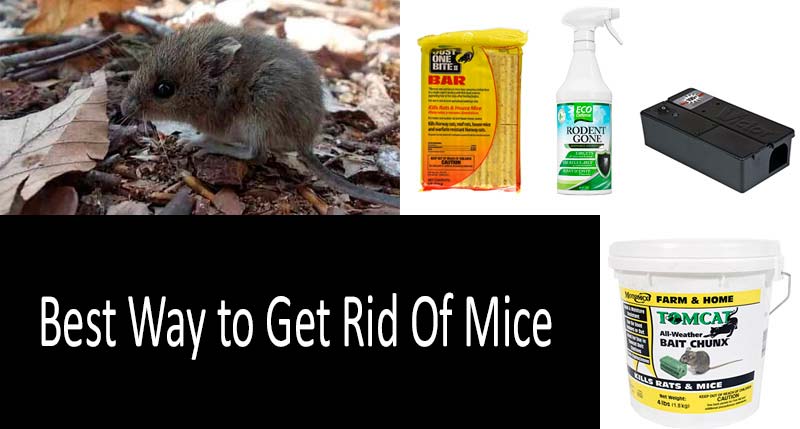










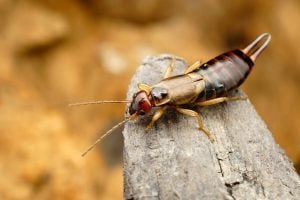
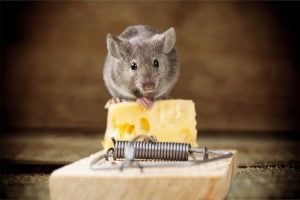
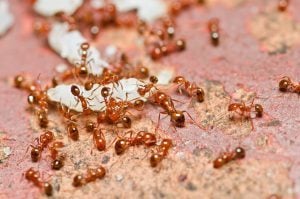
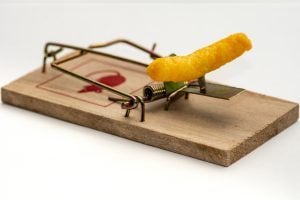
17 thoughts on “Best Way to Get Rid Of Mice: Killing and Poisoning Mice”
Is anybody used Mortal Electronic Traps? It’s so many nice words in this article about this, so I even don’t know – it’s true or it’s just advertising for money. I live in a not big house, in the village. I need true way to kill all mice, but I don’t want to use poison.
How to get rid of mice with poison? More specifically I wonder which proportion is the best for dissolving it.
By the way, I haven’t seen an article devoted to the best way to get rid of mice; I’d love to read one! As I am an avid rat-catcher, I am positive that poison and electronic traps are the best ways.
Getting rid of mice is such a tedious activity. Thank God, there are none of these pests at my house.
I need help in getting rid of mice on my lot. I tried using traps but, they were useless. I’m afraid of using poisons because my dog is always running around. What should I do?
I don’t know ad this or no, but thanks to stoppestinfo I won wars with cockroaches and mice. I used Rat Tale Remote Monitor, because I have a cat, and if it would eat poisoned mouse – it will die. This trap really works!
How to get rid of a mouse with natural treatments? Any ideas?
Yesterday I read an interesting article “How to get rid of mice in your house”. Honestly, I didn’t find anything new there, and I’ll keep using traps as before.
I’m sick of dealing with the issue of how to get rid of mice in the house; they keep on coming back before winter. I will go nuts with these invasions soon!
Guys, please help! How to get rid of mice in the house without poisons or traps that will hurt them? Do you know of any ways?
Honestly, I have no idea how to get rid of a mouse without poisons or traps; probably you need to buy special traps with baits to lure them there.
Hi! I have a problem; maybe someone here can give me tips. How to get rid of mice in walls? I’ve never encountered them…
Beware! rodent poison often kills the owls, hawks and cats that eat the dead or dying rodents and then whatever eats them. You are killing not just rodents but their natural predators, along with whatever creature eats them. It is poisoning the food chain and a major cause of death for owls, hawks and the creatures that eat the carcasses.
Someone, please, tell me how to get rid of mice naturally? Are there any plants repelling these rodents or something?
Mice are filthy looking little creatures that should be roaming around or inside your house. Reason for that is one mouse carries about 25 diseases along with it. This shows how dangerous and alarming the situation is when your house has even one mouse in it. That is why many people are disgusted by the thoughts of even getting near to a mouse. How to get rid of mice?
Ever since I had an issue and a friend told me about Raider Wildlife Control, I’ve followed these guys blogs. They just posted one more high level about mice but there are a few others they’ve penned that I’ve enjoyed! They just posted this link with 3 baby mice hanging from a mother as they travel crazy that they caught this on cam!! Take a look at their blog and vids!
https://raiderwildlife.ca/the-truth-about-mice/
https://www.youtube.com/watch?v=b21OmDWdMX0
Nice info!